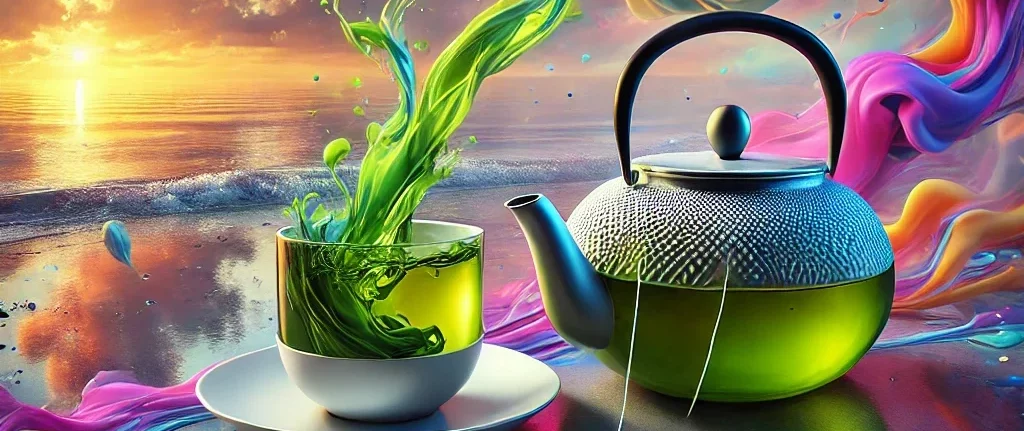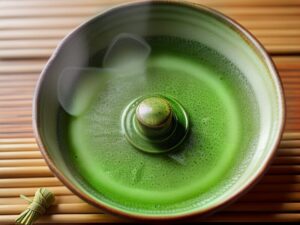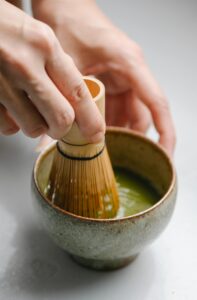Green Tea Does Have Caffeine

Green tea does contain caffeine, though it has less than coffee and some other teas. On average, an eight-ounce cup of green tea has 20 to 50 milligrams of caffeine. In comparison, black tea contains about 40 to 70 milligrams, while coffee has a much higher range of 95 to 200 milligrams per cup. Matcha, a powdered green tea, typically has 60 to 70 milligrams of caffeine per serving because you consume the entire tea leaf.
The caffeine content in green tea can vary based on the type of tea leaves, the region where they are grown, and how the tea is brewed. For those seeking a mild caffeine boost without the jitters, green tea is an excellent choice. Its caffeine is also complemented by an amino acid called L-theanine, which promotes a calm yet alert state.

Health Benefits
Green tea is packed with antioxidants, particularly catechins, which are potent compounds that fight oxidative stress in the body. One of the most researched catechins, epigallocatechin gallate (EGCG), has been linked to numerous health benefits.
- Supports Heart Health: Drinking green tea regularly may lower LDL cholesterol and improve blood flow, reducing the risk of heart disease.
- Boosts Brain Function: The combination of caffeine and L-theanine can enhance memory, focus, and alertness.
- Aids in Weight Management: Green tea can boost metabolism, making it a helpful addition to a healthy diet and exercise routine.
- Supports Immune Function: Antioxidants in green tea can help strengthen the immune system, protecting against common illnesses.
- Promotes Healthy Skin: The anti-inflammatory properties of green tea can reduce redness and acne, while its antioxidants combat signs of aging.
- Lowers Risk of Chronic Diseases: Regular consumption may reduce the risk of developing certain cancers and type 2 diabetes.
Incorporating green tea into your daily routine is a simple step toward improving overall health.
Recipe for Best Flavor
A well-brewed cup of green tea brings out its delicate flavors without bitterness. Follow this recipe for a perfect cup:
Ingredients:
- 1 teaspoon of loose-leaf green tea or 1 green tea bag
- 8 ounces of fresh, filtered water
Equipment:
- Kettle
- Tea strainer (if using loose leaves)
- Cup or teapot
Instructions:
- Heat water to 160°F to 185°F. Avoid boiling water as it can scorch the leaves.
- Add the green tea leaves or bag to your cup or teapot.
- Pour the heated water over the tea.
- Steep for 2 to 3 minutes. Longer steeping can result in a bitter taste.
- Strain the tea leaves or remove the tea bag.
- Enjoy your tea plain or with a touch of honey or lemon.
Following these steps ensures a balanced and flavorful cup every time.
Varieties and Their Unique Qualities
Green tea comes in many varieties, each with its distinct taste, aroma, and characteristics. Here are twelve popular types:
- Sencha: A Japanese green tea with a mild, grassy flavor and refreshing aroma.
- Gyokuro: Known for its umami-rich taste, this tea is shaded before harvesting.

- Matcha: A powdered tea used in traditional tea ceremonies, offering a rich, creamy flavor.
- Dragon Well (Longjing): A Chinese tea with a nutty, sweet flavor and flat, pan-roasted leaves.
- Bancha: A lower-grade Japanese tea with a bold and slightly earthy taste.
- Hojicha: Roasted green tea with a toasty, caramel-like flavor.
- Kukicha: Made from stems and twigs, this tea has a light and slightly sweet flavor.
- Genmaicha: A blend of green tea and roasted rice, offering a nutty and savory taste.
- Jasmine Green Tea: Scented with jasmine flowers, this tea has a floral and slightly sweet flavor.
- Biluochun: A Chinese tea with fruity and floral undertones, rolled into tiny spirals.
- Shincha: The first harvest of the season, offering a fresh and vibrant taste.
- Yellow Tea: A rare tea with a smooth and mellow flavor, slightly sweeter than other green teas.
Each variety provides a unique experience for tea enthusiasts.
Quick Facts
- Green tea originated in China over 4,000 years ago.
- It is the least processed type of tea, retaining most of its natural antioxidants.
- Green tea leaves can be steeped multiple times, with the flavor evolving with each brew.
- The caffeine in green tea is lower than coffee but higher than herbal teas.
- Store green tea in an airtight container away from light and moisture to preserve its freshness.
- Matcha is considered the highest grade of green tea due to its rich nutrient content.
- Green tea is used in traditional Chinese and Japanese medicine.
- Drinking green tea after meals may aid digestion.
- It pairs well with light snacks like nuts, fruit, or rice cakes.
